Berkeley-based painter John Zurier’s first solo museum exhibition, Matrix 255, on view at the Berkeley Art Museum, includes twenty-two new paintings that demonstrate a subtle effect on the viewer, which builds the more time one spends with the work. Stark simplicity gives way to an understanding of the hours, weeks, and months of work that go into these paintings. Nearly imperceptible brushstrokes are unearthed only if one wishes to find them. Slight changes in color tone yield the power to create emotions or summon associations.
The works in Matrix 255 all arise from Zurier’s time painting in Iceland and are embedded with personal experiences, emotions, and recollections. Viewers can sometimes gain access to these elements through contemplation or through the works’ titles, but just as often one would need entry into Zurier’s private thoughts. Though the paintings may appear to be total abstractions, they are grounded quite firmly in the Icelandic landscape and Zurier’s experiences there. The lines, paint drops, and blurs in each of these pieces insinuate some specific phenomenon, location, or impression. I sat down with Zurier to talk about Iceland and how it materializes in his work.
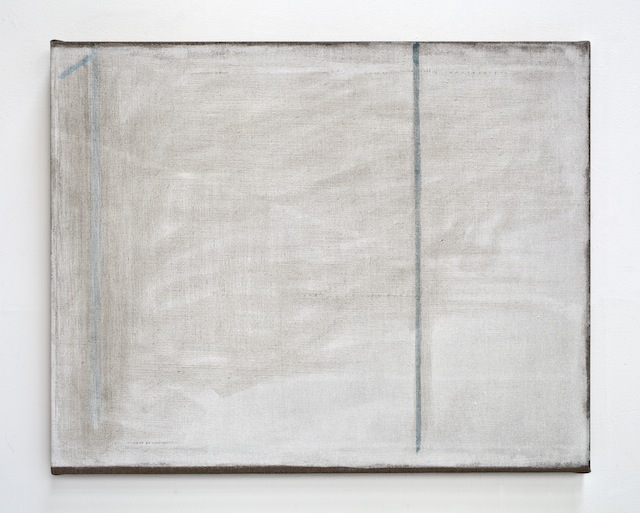
MHT: I’m interested in this idea of you working in a landscape rather than depicting the landscape itself. Can you tell me what this means for your work?
JZ: For me, you experience nature whole. It just comes to you. With the landscape, the things you can’t reproduce are what are interesting to me. You’re dealing with these forces and energies and then try and make a painting that’s an equivalent of that. That’s what I mean about painting in the landscape.
I worked for a couple of years in Iceland making watercolors, but I wasn’t making paintings. It took me a while to figure out how I could make paintings there. One of the things that draws me to Iceland is the light, which is so different for me growing up in California. In California, it’s a really intense Mediterranean light with really strong contrasts. In Iceland, there’s very little contrast in the lights, and some of the things are so subtle. For example, the ocean at twilight will often be lighter than the sky, and there are these subtle color contrasts that happen that are almost at the threshold of visibility. I thought, “How can you paint something like this?”
MHT: Much of your work in Matrix 255 was created in Iceland. What’s your relationship with the country and how did that start?
JZ: My wife Nina and I went to Iceland in 2001 on a horseback trip. We rode through the center of Iceland in the highlands. It was one of the most moving trips of my life. But I didn’t go back until 2011. California College of the Arts asked me to teach a summer class there and I knew I wanted to go back. As soon as I got there, I realized it was perfect. I knew I wanted to be there. We’ve been there for the last four summers, arriving in late May to teach a class for students from CCA, and then Nina and I stay on through July and then go back for Christmas.
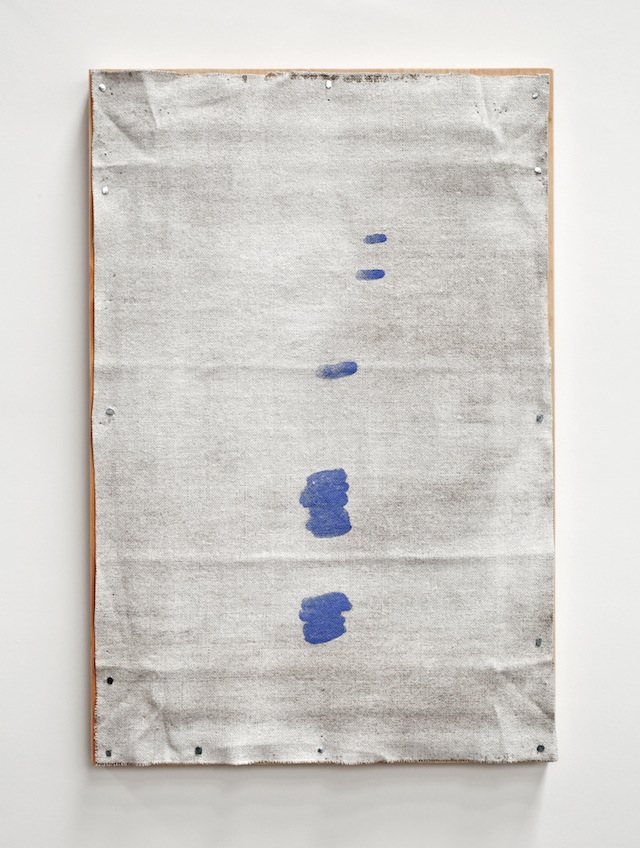
MHT: I was only aware of you going in the summer. Are any of the works inspired by your experiences in the winter as well? I imagine that changes things completely.
JZ: Some of the watercolors were made in the winter in Reykjavík. And predominantly the works made in Iceland were made during the summer. The winter gets into the work. A lot of the way I work is through memory of things — memory of color, experiences. I come back and start a painting and it’s through the painting of it that I realize, “Oh, I know where this is. I know what this is. This relates to this point here.” So I can’t say what is winter experience versus what is a summer experience. It’s very important to have two experiences, between this extended period of light and then this real short period of light, which is very, very dark.
MHT: Can you tell me a little bit about Héraðsdalur, which many of the paintings are named after.
JZ: That group of work is titled after the farm, where I was living and working this past summer. Héraðsdalur is located in a broad valley in the north of Iceland in a region called Skagafjörður. I met a group of Icelandic artists this summer and they talked about the special light in Skagafjörður. It’s famous for its light.
They told me a story about a nineteenth-century painter from Denmark who came to Skagafjörður because he had heard about the light and wanted to paint this famous light. He got himself a hotel room in the town nearby. Everyday he’d go out, set up his easel, and start a painting. He did this every day for a month and then one day he just packed everything up and went home. He couldn’t capture the light. This is what I was trying to say. The light is the thing that is the most subtle and the most interesting. It’s so special and yet it can’t be captured. How do you put it into form?
MHT: I sense this sort of solitude or unsentimental loneliness in many of these works. Is that something that’s in the landscape too?
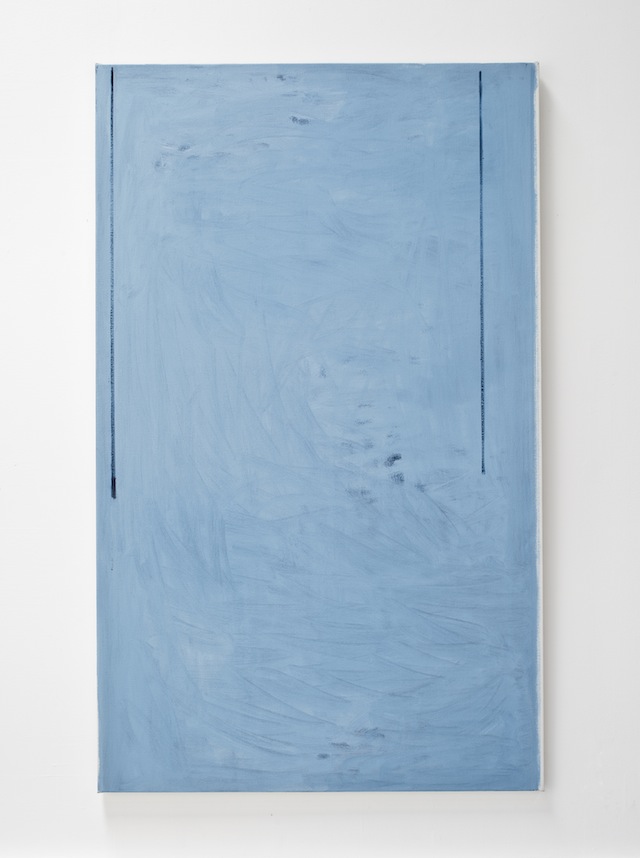
JZ: I didn’t go to Iceland searching for unsentimental sense of solitude, but I certainly found that when I was there. I think that’s one of the things about landscape. When you see landscapes of Iceland it’s usually spectacular. It’s usually these amazing waterfalls and amazing glaciers, and I’m not really interested in that kind of picturesque quality. Up in Skagafjörður it’s softer, it’s different.
MHT: It seems that names have an important role in your work and could even impact how one feels about a particular painting. For example, I might feel differently about Summer Still (The Same Shadow), which is one of my favorite works in the exhibition, if it was named Across the River or Avalanche, which both seem reasonable for that work. For you, what’s the relationship between a painting and the title you eventually give it?
JZ: It’s often a very specific memory for me. I feel the title can give a different entry into the work. For Duchamp, he thought a title was like adding another color. But the titles have to fit with the energy of the painting. I couldn’t call it Avalanche because it doesn’t have anything to do with it, even though they seem as if they could be random. They’re not random to me at all. Summer Still has to do with the kind of movement and stillness within.
But also, the “Summer Still” was also this idea that it is still summer. It’s a sudden realization that summer isn’t over. It also relates to a poem from an Icelandic poet named Stefán Hörður Grímsson. He has a poem called “Summer Still” and I really wanted to use this title, but I’d used it already for another painting, so that’s why it’s parenthetical. It seemed to me that when you say “Summer Still” and then you call it “The Same Shadow,” somehow those lines get activated.
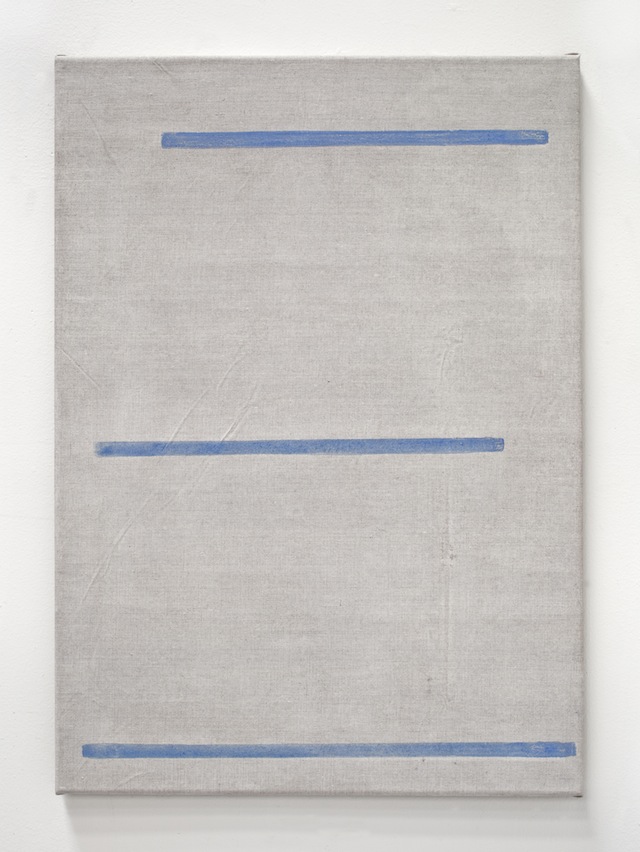
In the case of Avalanche, I stretch the canvas, it’s primed, and it’s sitting over on the side of the wall. I’m looking at it and I want to do something on it, but I have to just wait for a while. So I’m working on other things and then once I look at it out of the corner of my eye and all of a sudden I see these things appear. It’s as if all of a sudden, I could take this whole image and put it down.
But also there was this feeling of instability. [The lines in the painting] are not perfectly poised formal balances. There’s something a little bit fragile about them. There are avalanche protectors up on the hills and the fjords, especially in a town near where I was staying. It’s a very steep fjord and the towns are right at the bottom; they are prone to being destroyed by avalanches. So they built these structures and they’re in these angles that just go up. It reminded me of that — something that seems so tenuous and fragile but is able to hold some big force.
MHT: Avalanche was another work I wanted to talk about in relationship to this idea of the title being an entry. When I first approached that work, before looking at the title, I didn’t feel what I would associate with the violence of an avalanche. But then after seeing the title I stared at the painting a little longer. Then, as opposed to the instability you felt, I could sense a sort of calm or quietness after an avalanche.
JZ: That’s really interesting because I realize I do this for myself and I wonder how is this going to be perceived. I realize that I have my own relationships with the paintings. Someone else will relate to them too, but they’re going to bring something completely different. None of this was thought out in a logical way. I wasn’t thinking about the calm after the avalanche because avalanches are horrific. You’re in this town, it’s a beautiful sunny day, and you see these things that are there to protect and to stop. It’s essentially this thing that’s waiting for some incredible force. It’s this fragile object that could be destroyed so quickly. In a way, I think painting is like that.
And Lighthouse… You title it Lighthouse and all of a sudden it’s easy to see it as a representation of a lighthouse, of a color. Some of the lighthouses in Iceland are painted that orange. But I just like the idea of a “lighthouse.” Just the word itself. The house does exactly what it does: it emits light. And that painting emits light. It’s very, very opaque. The way it’s so solid and it emits light… it just felt right.
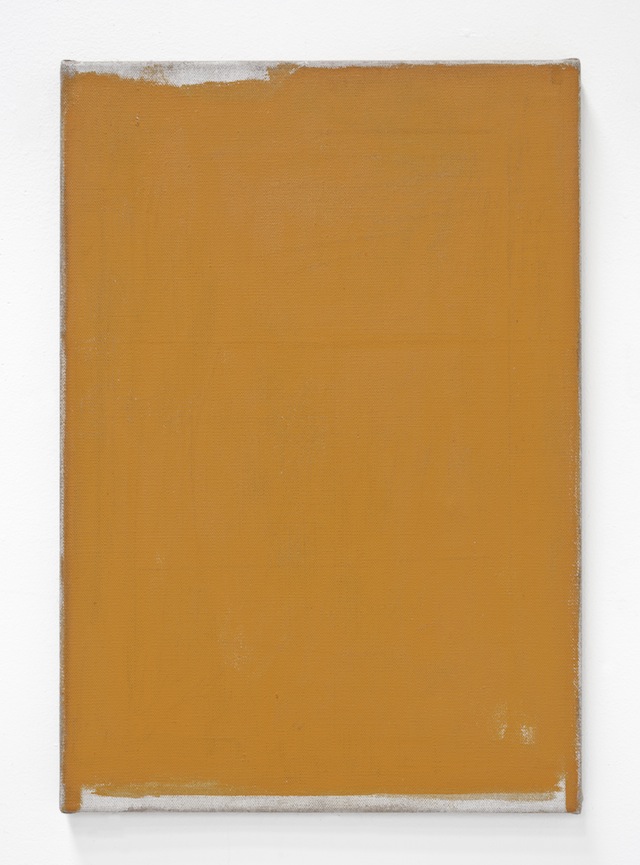
MHT: That was another title that I thought was interesting. When I saw the work and its title it made sense. It’s vertical, it’s kind of the color of a light, and so it makes sense. Then afterwards I read in the brochure that this is the color of many lighthouses in Iceland. And because I compulsively look everything up, I went home and looked up Icelandic lighthouses and saw these images with glaciers, icebergs, the sea, and then these totally incongruously colored lighthouses. The painting then worked on another level in the exhibition because it too stood out against the mostly light blues and greens, as if the whole gallery was that landscape. So it made sense on one level, but when I learned a little bit of the back story it had an additional meaning.
JZ: What I love is that you think about this the way I do. I’m like, “Oh, I like this so I’m going to look up this and I found out this,” and then all of a sudden these meanings start to develop. I love the idea that you can have a painting in a show that will illuminate all the other paintings. So that if you just had a series of paintings and you add one painting to it all of a sudden it makes us look at all the other paintings differently.
John Zurier / MATRIX 255 runs through December 21, 2014 at the Berkeley Art Museum. For more information visit bampfa.berkeley.edu.